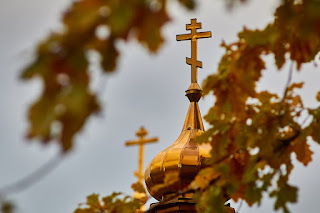Serbian Orthodox Church renews communion with the Church of North Macedonia (Ohrid)
 |
| mitropolija.com photo |
On May 16th of 2022 the Holy Synod of the Serbian Orthodox Church has announced the renewal of Eucharistic communion with the Orthodox Church of Northern Macedonia (Ohrid Archdiocese). This marks the end of a schism that dates back to 1967, when the clergy of North Macedonia unilaterally declared the Church's autocephaly (full independence).
Earlier, on 9 May, the Ecumenical (Constantinople) Patriarchate announced the restoration of communion with the Church of Northern Macedonia (Ohrid), which led the Patriarchate of Moscow to accuse Constantinople of "interfering in foreign canonical territory". The new decision of the Holy Synod of the Serbian Church shows that the Serbian side does not consider this to be an "interference".
The North Macedonian Church issue is one of the wounds of Balkan Orthodoxy. The separation of this Church from the Serbian Church was supported by the Communists as far back as the Yugoslav era, but has become even more acute since the collapse of Yugoslavia and North Macedonia's becoming a separate state. A similar but smaller scale problem exists in Montenegro. As the peoples have become politically independent, they have also sought ecclesiastical independence.
The case of the Orthodox Church of Northern Macedonia (Archdiocese of Ohrid) has been complicated by the problem of its name. Macedonia is a region of northern Greece, where the Metropolitan of Thessaloniki is the historical leader, so the word 'Macedonia' in the Church's name is frightening to the Greek world, as it seems to refer to the territory of Greece. The name "Archdiocese of Ohrid" suits the Greeks, but not the Bulgarians - although Ohrid is the city of the modern state of North Macedonia, it is the ancient cathedral that was the first centre of the Bulgarian Orthodox Church. Thus, the name "Archdiocese of Ohrid" may as well refer to a claim to authority over the Bulgarian Church.
In the case of Serbia, the conflict was not over the name, but over the ideas of "Greater Serbia". Unable for a long time to come to terms with the collapse of Yugoslavia, the Serbs sought to maintain in the region at least a symbolic affiliation of the peoples of the region to the one, Serbian Orthodox Church. The restoration of communion shows that the Serbian hierarchs rejected political ideologies and put the interests of the Church first. The Patriarchate of Constantinople restored Eucharistic communion with the Archdiocese of Ohrid, leaving administrative matters to it and to the Church of Serbia, while the Church of Serbia restored communion, recognising the "maximum possible independence" of the Church of Northern Macedonia, and leaving administrative matters for the indefinite future. This a very joyful moment for every Orthodox Christian and a very great sign of the Spirit of love prevailing in the Serbian Orthodox Church.




